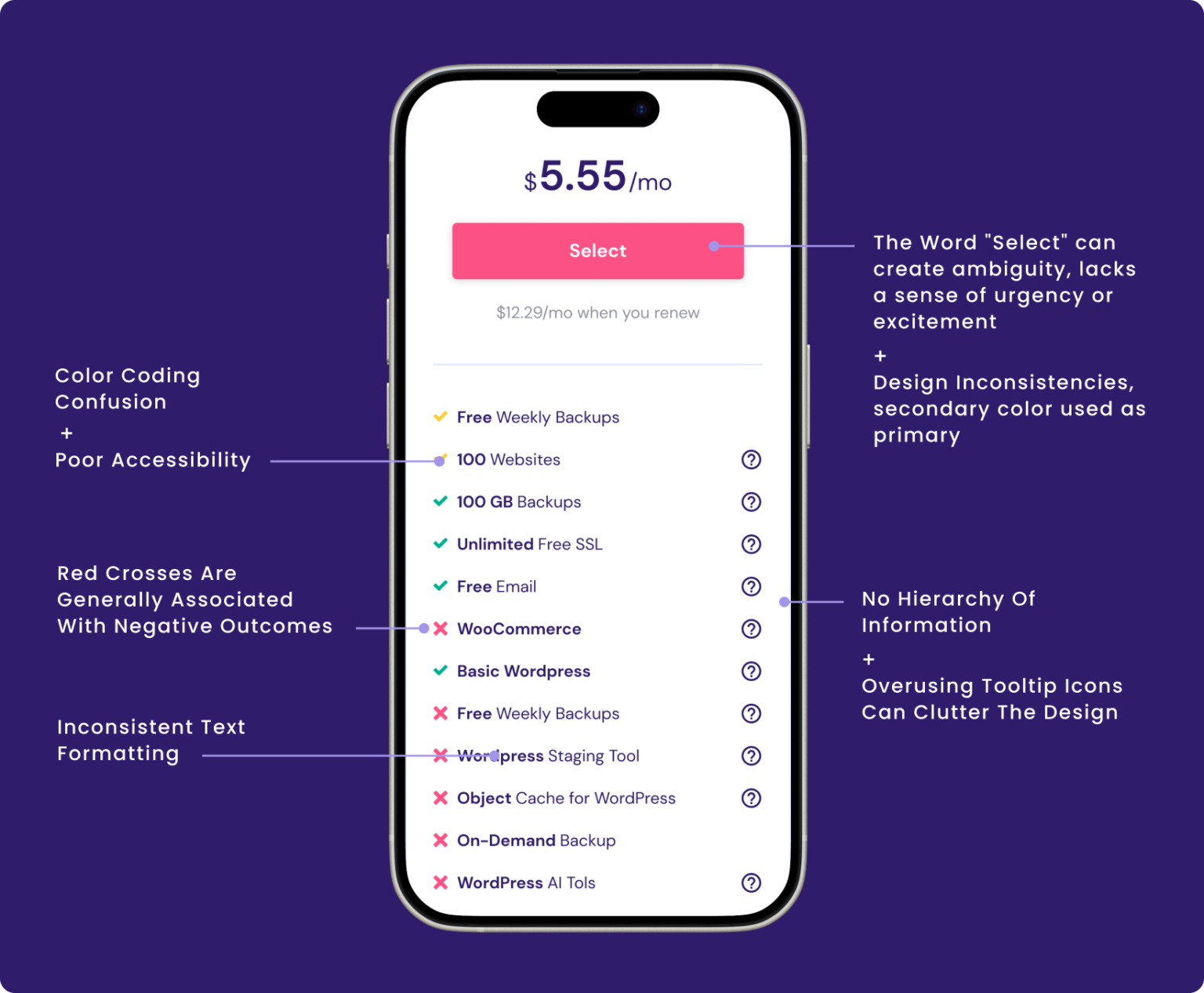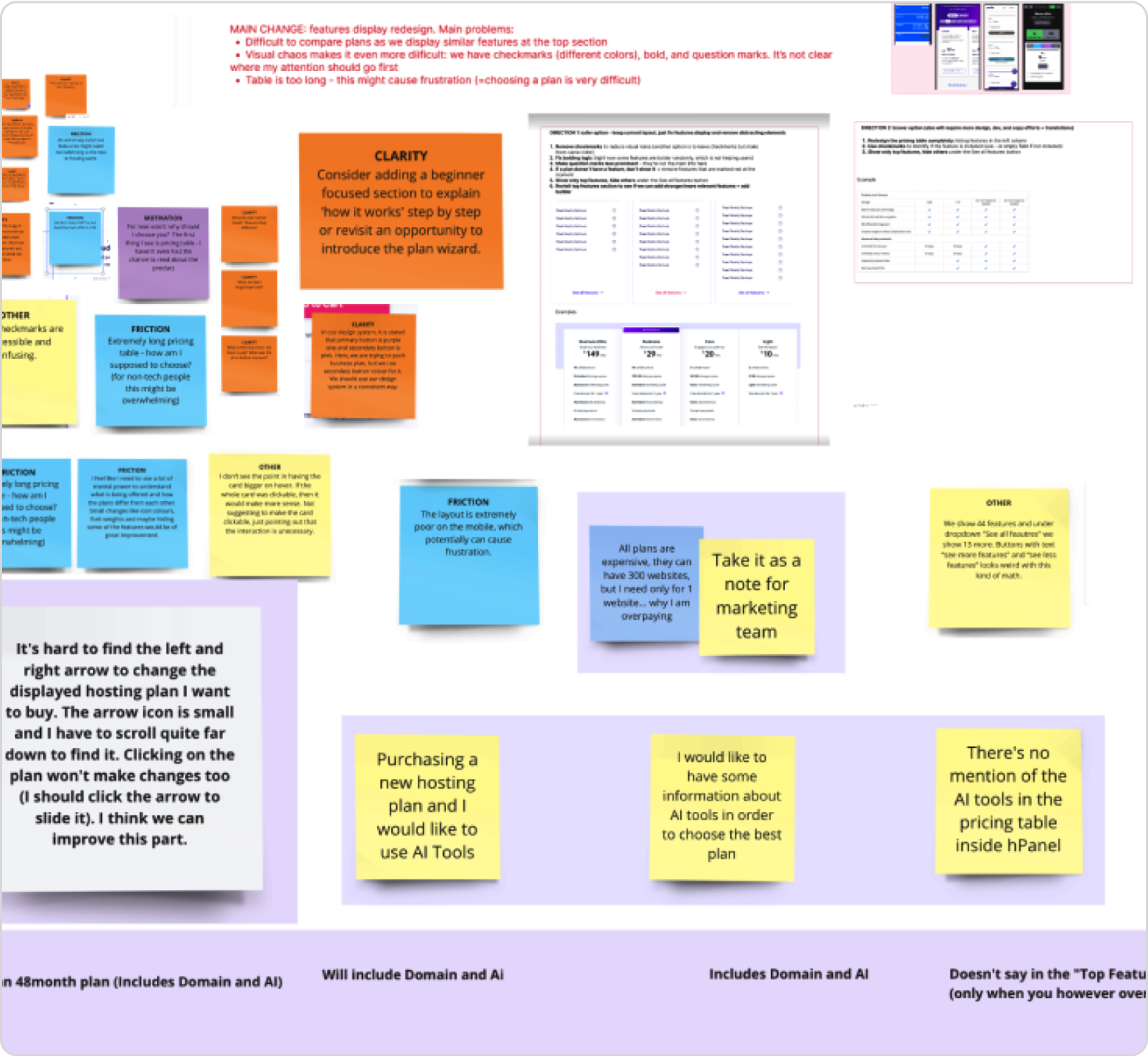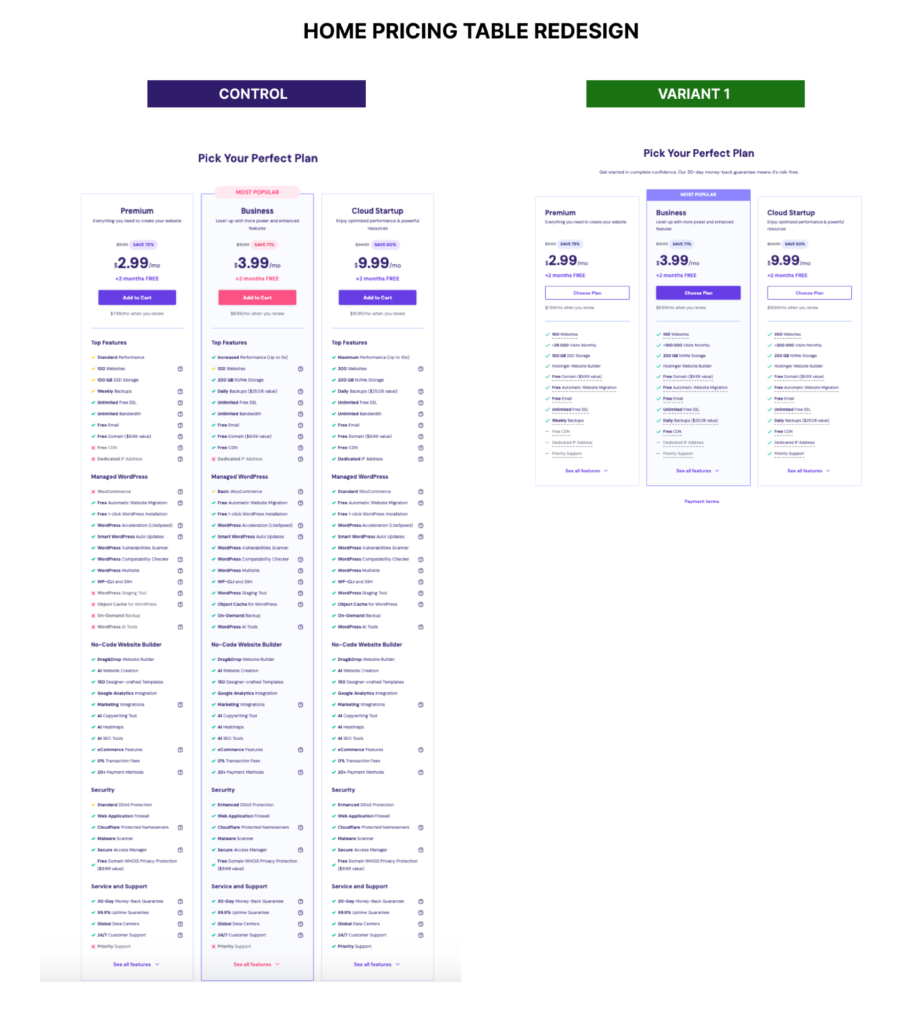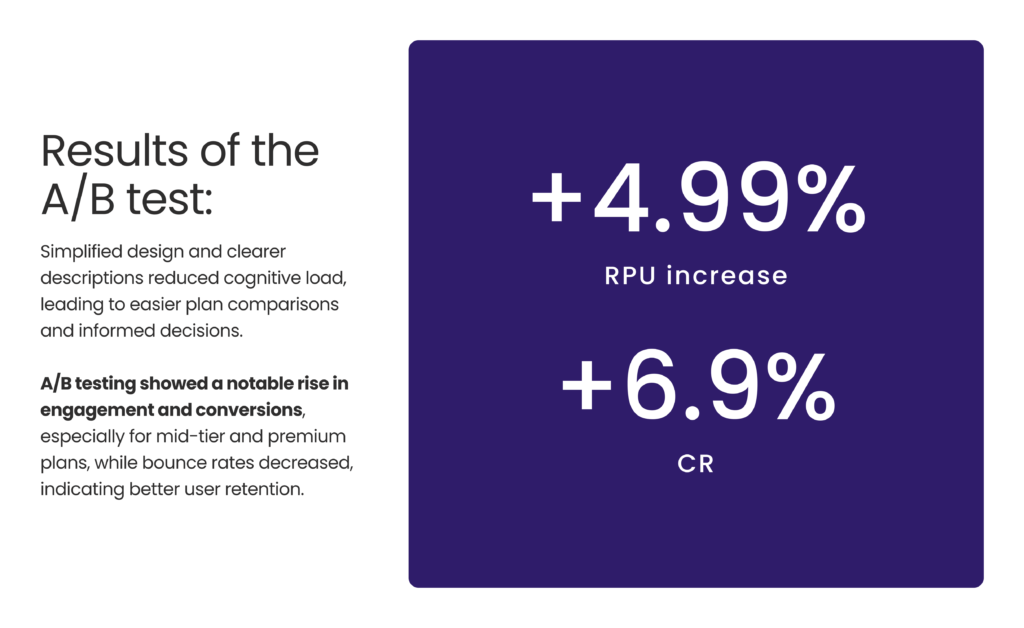Pricing Card Uplift
Hostinger
UI/UX Designer
January 2024



Extensive Feature List: The original pricing cards contained an overwhelming number of features, making it difficult for users to quickly understand the benefits of each plan.
Vague Descriptions: The descriptions of the plans and their associated features were unclear, requiring users to be tech-savvy.
It was very hard to “scan” the difference of the plans, feature-wise.
Inconsistent Design: Visual inconsistencies across the pricing cards contributed to a lack of professionalism
Preparation before the Pitch

Redesign Highlights

Conducted an in-depth competitor analysis, and each product manager carried out their own market research. Based on these insights, they chose to highlight only the most compelling features of their product, rather than presenting an exhaustive list of everything we offer.


We established a consistent visual hierarchy across all pricing cards, ensuring that key information such as plan names, prices, and call-to-action buttons were following guidelines of the brand, prominently displayed and easy to read.







